
Diseases / Sexually Transmitted Infections: Symptoms, Causes & Treatment
Sexually transmitted diseases (STDs), also known as sexually transmitted infections (STIs), are very common. Millions of new infections appear every year all over the world, including in Romania.
What are sexually transmitted infections?
Sexually transmitted diseases (STDs) or sexually transmitted infections (STIs) are infections that are transmitted from one person to another through sexual contact. Contact is usually vaginal, oral or anal. They can also sometimes spread through other kinds of intimate physical contact. For example, genital herpes and HPV can be transmitted through skin-to-skin contact.
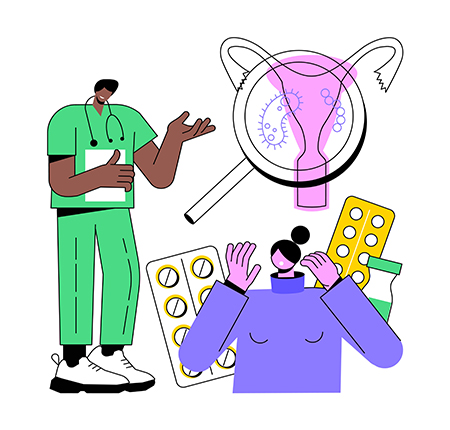
Symptoms of sexually transmitted diseases
STDs do not always cause symptoms or may cause only mild discomfort that is usually ignored. Because of this, you may have an infection and not know it. But you can also pass it on to others.
If there are symptoms, they might include:
- Unusual discharge from the penis or vagina
- Sores or warts on the genital area
- Painful or frequent urination
- Itching and redness in the genital area
- Blisters or sores in or around the mouth
- Abnormal vaginal odor
- Anal itching, pain or bleeding
- Abdominal pains
- Fever
Sexually transmitted diseases - Symptoms
Sexually transmitted diseases are diverse, currently more than 20 such diseases have been discovered. However, the most common are:

Chlamydia - Signs and symptoms
Chlamydia is a common sexually transmitted disease. It is caused by a bacterium called Chlamydia trachomatis. It can infect both men and women. In women, chlamydia develops in the cervix, rectum or throat. In men it can occur in the urethra (inside the penis), rectum or throat.
You can get chlamydia during oral, vaginal or anal sex with someone who has the infection. Women can transmit the disease to their children during childbirth.
Chlamydia usually does not cause any symptoms. So you may not realize you have it. Asymptomatic people can still spread the disease to others. If you have symptoms, they may not appear until several weeks after you had sex with an infected partner.
Symptoms in women include:
- Abnormal vaginal discharge, which may have a strong odor
- A burning sensation when urinating
- Pain during intercourse
- If the infection spreads, you may have lower abdominal pain, pain during intercourse, nausea or fever.
Symptoms in men include:
- Penile discharge
- A burning sensation when urinating
- Burning or itching around the opening of the penis
- Pain and inflammation in one or both testicles (although this is less common)
If chlamydia infects the rectum (in men or women), it can cause rectal pain, discharge, and/or bleeding.
Gonorrhea - Signs and symptoms
Gonorrhea is a sexually transmitted disease. It is most common in young adults. The bacteria that cause gonorrhea usually infect the genital tract, mouth, or anus. You can get gonorrhea during vaginal, oral or anal sex with an infected partner. A pregnant woman can also make her baby sick during childbirth.
Gonorrhea does not always cause symptoms. In men, gonorrhea can cause painful urination and discharge from the penis. If left untreated, it can cause problems with the prostate and testicles.
In women, the first symptoms of gonorrhea are usually mild. Later, it can cause bleeding between periods, painful urination and heavy vaginal discharge. If left untreated, it can lead to pelvic inflammatory disease, which causes problems with pregnancy and infertility.
Trichomoniasis - Signs and symptoms
Trichomoniasis is an infection caused by a parasite called Trichomonas vaginalis. Symptoms of trichomoniasis usually appear within a month of infection. However up to half of infected people will not show any symptoms (although they can spread the infection to others).
The symptoms of trichomoniasis are similar to those of many other sexually transmitted infections (STIs), so it can sometimes be difficult to diagnose.
Trichomoniasis in women can cause:
- abnormal yellow-green vaginal discharge with a different texture than normal - thick, foamy or thin. They are larger than normal and may also have an unpleasant fishy smell
- pain, inflammation and itching around the vagina - sometimes the inner thighs are also affected by itching
- pain or discomfort when urinating or having sex
HIV - Signs and symptoms
HIV is a virus that attacks the immune system. It can be spread through sexual contact and other means such as fluid exchange. In the case of a person infected with HIV, the virus will be present in all their body fluids, including semen, blood, breast milk, etc. If these fluids enter another person's body, that person can also contract HIV. This can happen through sexual contact, using the same medical or cosmetic instruments that have not been disinfected, skin contact if there are open wounds, childbirth and breastfeeding.
People with HIV have a higher risk of contracting other STIs and developing other infections. Without treatment, the body can become immunocompromised. This can lead to life-threatening complications.
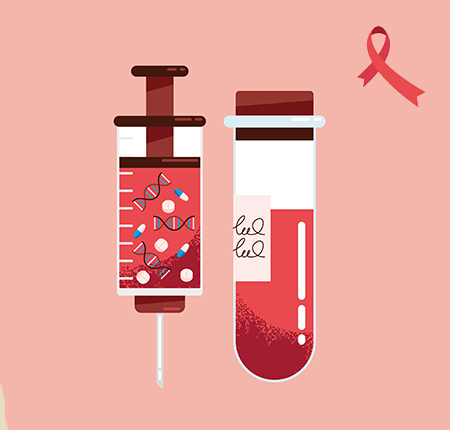
Treatment can reduce the amount of virus in the body to a level undetectable by tests. This also means that the virus cannot spread to other people as it is in very small quantity. A person with undetectable HIV cannot stop treatment. This should still be followed to keep the virus level down.
Other ways to prevent transmission include:
using a condom or other barrier contraceptive method during vaginal or anal intercourse
taking pre-exposure prophylaxis treatment, which is medicine that can help prevent HIV in people who have been exposed to the virus
using gloves and carefully disposing of sharp objects when the work environment is medical or cosmetic
using disposable needles
Genital Herpes - Signs and symptoms
Genital herpes is a sexually transmitted disease caused by a virus called herpes simplex (HSV). It can cause sores on the genital or rectal area, buttocks and thighs. It can be acquired through vaginal, anal or oral sex with an infected person. The virus can spread even when there are no wounds. Mothers can also infect their babies during childbirth.
Herpes symptoms are called outbreaks. You usually have sores near the area where the virus entered the body. Sores are blisters that break and become painful, then heal. Sometimes people don't know they have herpes because they have no symptoms or very mild signs. The virus can affect newborns or people with weak immune systems more strongly.
New outbreaks will often appear in the first year. Over time, they occur less often and the symptoms become milder. The virus stays in your body for life. Learn more about genital herpes, how it manifests itself and how it can be treated by reading our article
HPV - Signs and symptoms
Human papillomavirus (HPV) is a group of viruses that affect the skin and mucous membranes. By mucous membranes we mean the mouth, anus, throat and cervix. There are different types of HPV. Some of them may have a stronger impact on health than others.
HPV is common and affects approximately millions of people around the globe. In Romania, thousands of cases are diagnosed annually. Almost everyone who is sexually active will have HPV at some point in their life, unless they have been vaccinated to prevent it.
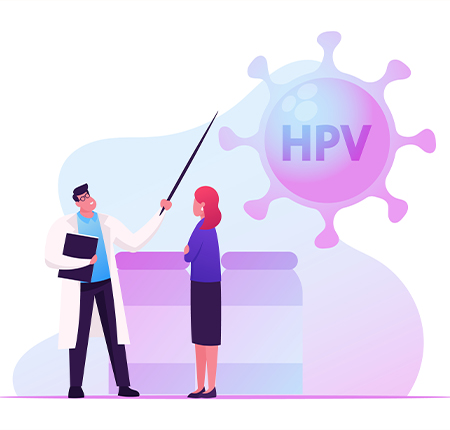
Since most cases show no symptoms, there is an increased risk of the virus spreading. Some types of HPV can cause genital warts. It is also very important to note that infection with the papilloma virus leads to an increased risk of cervical cancer, which you can read more about here.
HPV can spread through:
- vaginal and anal sex
- oral sex
- genital contact without penetration
- to the child during intrauterine life, although this rarely happens
Vaccination can help prevent HPV transmission. Find out more about HPV infection, vaccine and treatment on the ENROUSH blog.
Hepatitis - Signs and symptoms
Hepatitis A is spread through fecal-oral contact. This can happen when there is direct oral-anal contact or contact with fingers or objects that have come into contact with infected matter.
Hepatitis B (HBV) can be transmitted sexually (50 to 100 times) more easily than HIV. It is known that HBV can be present in vaginal secretions, saliva and semen. Oral sex and unprotected anal sex present an increased risk of disease transmission. Since HBV has been found in saliva, there is probably also a risk of transmission through deep kissing, and it increases if one partner wears braces or has open mouth sores. However, it has not been documented so far.
Hepatitis C (HCV) is spread through contact with the blood of an infected person -- which may be present from wounds, genital cuts, or menstruation.
Syphilis - Signs and symptoms
Syphilis occurs due to infection with the bacterium Treponema pallidum. It is a potentially serious infection and early treatment is necessary to prevent permanent damage to health and long-term complications.
There are usually four stages.
In the first stage, a person may notice a round, firm sore at the site of infection, usually around the genitals, anus, rectum, or mouth. This symptom tends to last 3-6 weeks. The wound may not be visible, as it is often painless and may be located internally, for example in the vagina. Syphilis can also pass to a baby during pregnancy.
In the secondary stage, there may be the following symptoms:
- a non-itchy rash in the form of rough, brown or red patches on the palms of the hands or soles of the feet
- mucosal lesions in the mouth, anus or vagina
- swollen lymph nodes
- hair loss
- headaches
- weight loss
- muscle pain
- fatigue
- fever
In the latent stage, the symptoms disappear. However, the bacteria remains in the body and can cause negative effects.
In the tertiary stage, life-threatening complications occur. They can affect the brain, nervous system, eyes, heart and other organs. Symptoms at this stage will depend on the elements affected by syphilis in the body.
The only way to confirm if a syphilis infection is present is by taking a test. If the result is positive, the person should seek medical advice. Also, the sexual partner or partners must be informed about the existence of an infection.
Symptoms will appear about 21 days after transmission of the bacteria, on average, but the period can also last between 10 and 90 days.
Asymptomatic sexually transmitted diseases
Many people are under the impression that they will know from the start if they have a sexually transmitted infection because they would notice the symptoms of it. But unfortunately it is not so. The incredible frequency of asymptomatic STIs is one factor that makes these conditions extremely common. People can and often do live with such a condition for many years without knowing it. During this time, if they are not careful, they can pass the infection on to some or all of their sexual partners.

The most common asymptomatic sexually transmitted infections are:
Chlamydia
Gonorrhea – in women, most of the time, gonorrhea does not show any symptoms
HPV – most people will be affected by an HPV infection during their lifetime which often clears up on its own
HIV – in the first months or even years after contracting the infection, the disease may not present any symptoms. It takes about 10 years for HIV infection to develop into AIDS
Genital herpes - although genital herpes is often associated with the idea of painful sores, some people don't have them. However, the infection exists and can be transmitted to the partner
Trichomoniasis - in many cases this STI has no symptoms, and affected people do not even know they have an infection
Hepatitis B – this usually goes away on its own, especially thanks to the mandatory childhood vaccine. However, if it becomes chronic, hepatitis B can lead to kidney failure
Incubation period - Sexually transmitted diseases
Infections that cause sexually transmitted diseases (STDs) have different incubation periods, or time intervals between the time of transmission and the time when symptoms appear. Some incubation periods last only a few days, while others can last weeks or months. You may also never have any symptoms.
Knowing how long the incubation periods are for the various infections that cause STDs can help you better recognize the signs and symptoms if they occur, although this is not a surefire way to determine whether or not you are infected.
Gonorrhea: 2-30 days
Trichomoniasis: 5-28 days
Syphilis: 10 - 90 days
HIV: >14 days - several years
Genital herpes: 2 - 14 days
Hepatitis: 28 - 42 days
Causes of sexually transmitted infections
STDs or STIs can be caused by:
Bacteria. Gonorrhea, syphilis and chlamydia are sexually transmitted infections caused by bacteria
Parasites. Trichomoniasis is an STI caused by a parasite.
Viruses. HPV, genital herpes and HIV are caused by viruses
Risk factors
Anyone who is sexually active is at some degree of exposure to an STD or STI. Factors that can increase this risk include:
Unprotected sex. Vaginal or anal penetration of an infected partner who is not wearing a latex condom significantly increases the risk of getting an STI. The risk can also be increased by an inappropriate or inconsistent use of protection methods
Oral sex may be less risky, but infections can still be passed on if a latex condom or dental dam—a thin, square piece of rubber made of latex or silicone—is not used.
Sexual contact with multiple partners. The more partners you have, the greater the risk.
History of STIs. If you already have such a condition, it is much easier to get another STI.
Non-consensual sexual activity. Coping with rape or assault is difficult, but it's important to see a doctor as soon as possible for screening, treatment, and emotional support.
Alcohol abuse or recreational drug use. Substance abuse can inhibit your judgment, making you more likely to engage in risky behaviors.
Injecting drugs. Sharing needles spreads many serious infections, including HIV, hepatitis B and hepatitis C.
Age. Half of STIs occur in people between the ages of 15 and 24.
Complications of sexually transmitted infections
Because many people in the early stages of an STD or STI have no symptoms, screening for STIs is important to prevent complications.
Possible complications include:
Pelvic pains
Pregnancy complications
Eye inflammation
Arthritis
Pelvic inflammatory disease
Infertility
Cardiovascular diseases
Immunocompromise of the body
Certain cancers, such as cervical and rectal cancers associated with HPV
STD Diagnosis & Analysis
Testing for STIs is a good idea for anyone who falls into one of the following categories:
has a new sexual partner
had sex with multiple partners
has any symptom that may indicate the presence of a sexually transmitted infection
However, it is worth noting that no STI test is completely accurate. Also, there are no tests available for some sexually transmitted diseases, and some people with these infections do not develop symptoms or do so only after a long time.
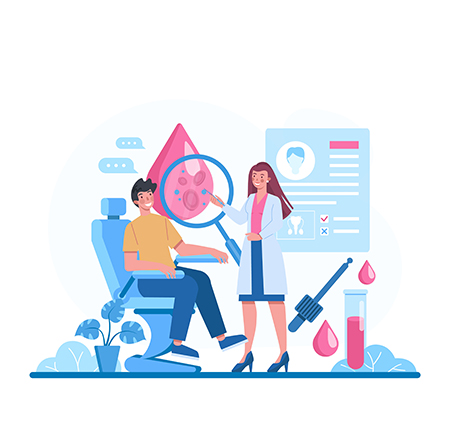
What tests are done for sexually transmitted diseases?
Depending on your sexual history, your doctor may recommend a variety of tests to check for an STI. Most of these conditions can be tested using urine or blood samples. The doctor may recommend these tests to check:
GONORRHEA
pox
chlamydia
HIV
In some cases, urine and blood tests are not as accurate as other forms of testing. It's good to know that it can take a month or more after exposure to certain infections for blood tests to show a 100% reliable result.
If a person contracts HIV, for example, it can take weeks to months for tests to detect the infection.
Many doctors use vaginal, cervical, or urethral swabs to check for other sexually transmitted diseases.
If you have a vagina, your doctor may use a cotton swab to take vaginal and cervical samples during a pelvic exam.
If you have a vagina or penis, they can take urethral samples by inserting a cotton swab into the urethra.
If you're having anal sex, they may also take a rectal sample to check for infectious organisms in the rectum.
STD diagnostic tests from the pharmacy
Some pharmacies offer test kits that you can do at home for a number of sexually transmitted infections (STIs), including chlamydia, gonorrhea, trichomonas, syphilis and HIV. Test results are confidential and come within 3 business days. These tests are only useful for people who do not have any symptoms of a sexually transmitted disease. If you already have symptoms, specialized testing is necessary in a specialized medical office. Moreover, even if a home test has a negative result, if you suspect that it could be a false negative, it is recommended to consult a specialist doctor. It will guide you on what steps to take next.
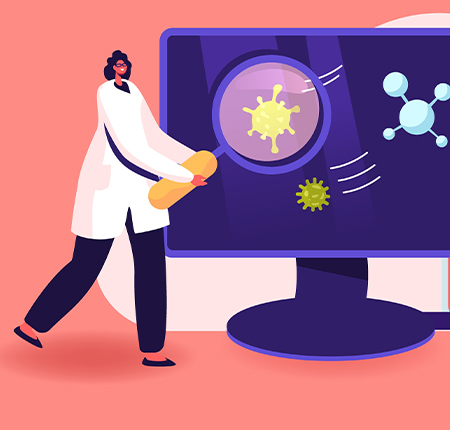
Ways to prevent sexually transmitted diseases

There are a number of factors that can increase your risk of STDs, so it's important to consider preventative measures to protect yourself. Among them we list:
Using a condom or dental shield for oral sex. These can greatly reduce the risk of direct contact with a lesion or fluid carrying an infectious agent.
Using water-based lubricants, as oil-based ones can cause condoms to break.
Getting tested for STIs even if you don't have symptoms. Regular testing should be a priority, especially when you have a new partner
Vaccination. Vaccines that protect against conditions such as hepatitis and HPV are a method of prevention often recommended by medical specialists.
Avoiding the use of drugs and alcohol. These substances can increase the likelihood of behavior that is risky from a health perspective.
Taking extra precautions or avoiding sex with people who inject drugs. A person who injects drugs may be more likely to get an STD, such as HIV or hepatitis.
Taking the precautions listed above can reduce the risk of transmitting or contracting STIs, but they are not a guarantee. It is important to have an open discussion with any new partner about their sexual history before starting a relationship. It is useful that before the first sexual contact both partners undergo tests.
Methods of treatment
There are different treatment modalities for sexually transmitted diseases depending on their type and complexity. Most often, doctors will prescribe drug treatment with antibiotics or antivirals.
Antibiotics
Single-dose antibiotics are often used as a treatment for sexually transmitted bacterial and parasitic infections, including gonorrhea, syphilis, chlamydia, and trichomoniasis. You will usually be treated for gonorrhea and chlamydia at the same time, as the two infections often occur together.
antivirals
For genital herpes or HIV, an antiviral drug is usually prescribed. You will have less chance of herpes recurrence if you take daily suppressive therapy with an antiviral medicine prescribed by your specialist. However, it is still possible to pass herpes on to your partner.
Antiviral drugs can keep HIV infection under control for many years. But you will still carry the virus and can pass it on, although the risk is lower.
What to do after a positive result?
Each country has different requirements, but most require that certain STIs be reported to your local or state Health Department. Public health departments often employ specialists trained in disease intervention who can help notify partners and refer people for treatment. These departments can also help with psychological counselling, information on disease management and to answer any other questions you may have.
How do you inform your partner that you have an STD?
If the tests show you have an STI, your sexual partners - including current partners and any other partners you've had in the past three months to a year - must be told so they can be tested. If they are infected, they can then be treated.
Formal, confidential partner notification can help limit the spread of STIs, especially syphilis and HIV. Those at risk can receive counseling and appropriate treatment. Some STIs can recur or be contracted again. Taking care to notify your partner reduces the risk of a new infection.
Frequently Asked Questions
Discover below a series of answers to the most frequently asked questions about sexually transmitted diseases.
Can sexually transmitted diseases be contracted from oral sex?
Yes, a large majority of STDs can also be transmitted through oral sex.
Can sexually transmitted diseases be transmitted to the baby?
Sexually transmitted diseases can be transmitted to babies in intrauterine life, at the time of birth or through breast milk. The method of transmission depends on the infection you have.






















